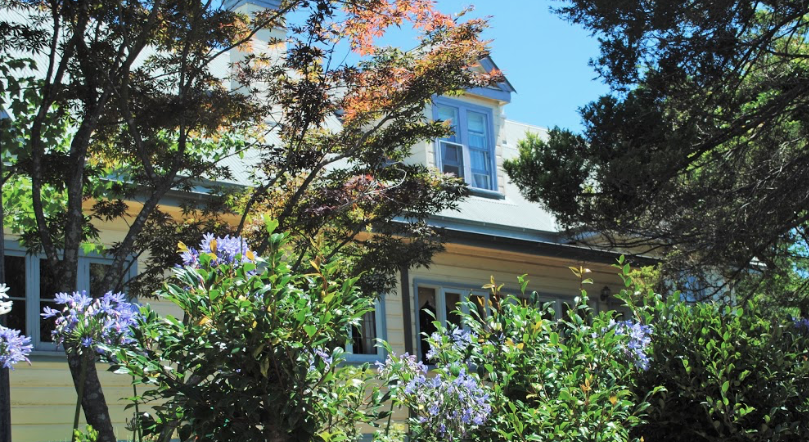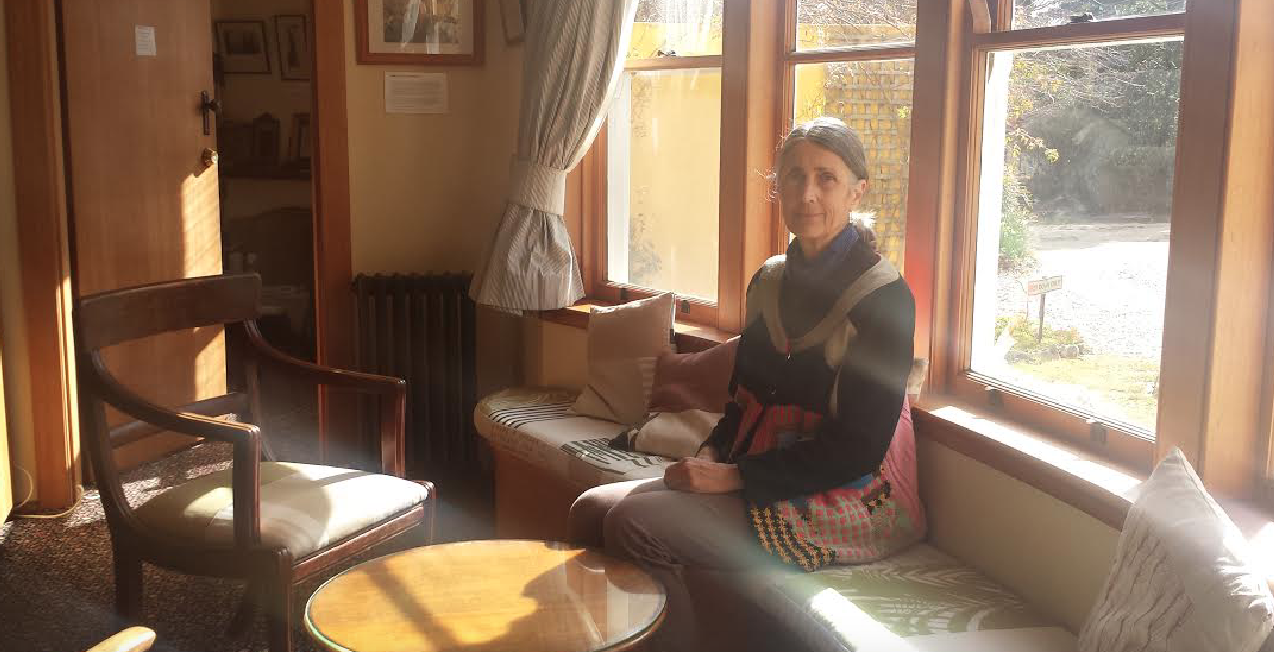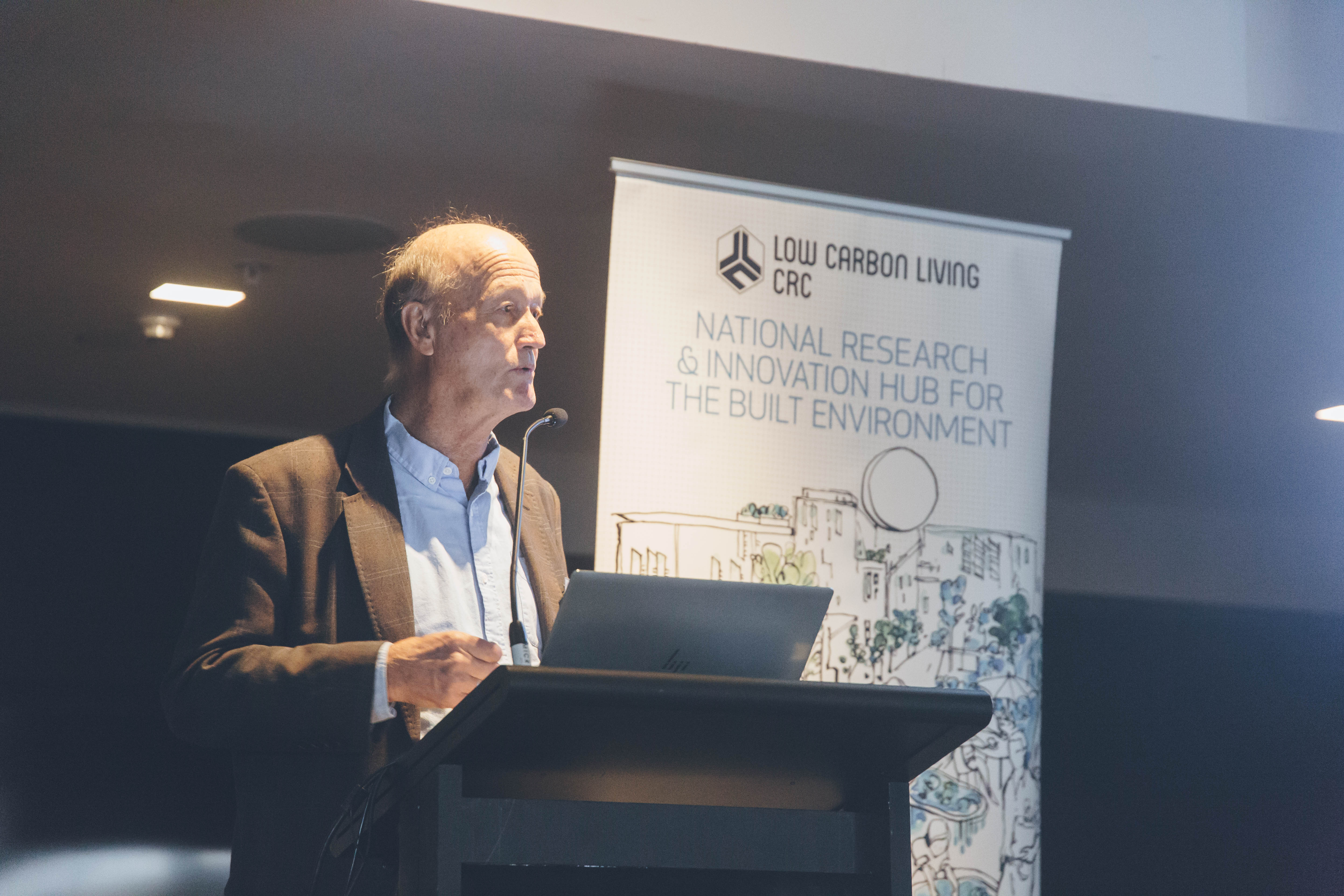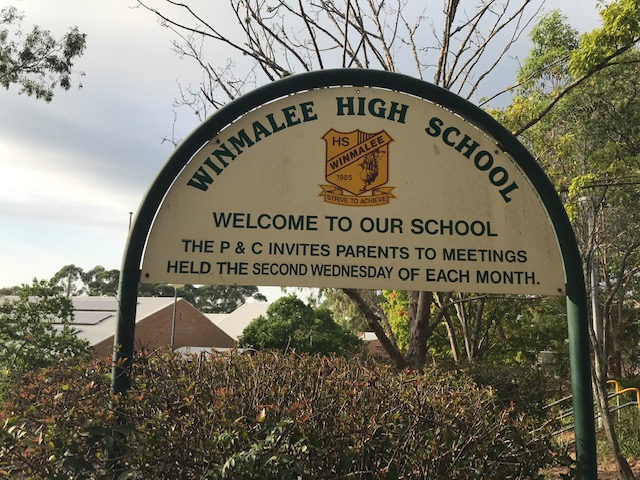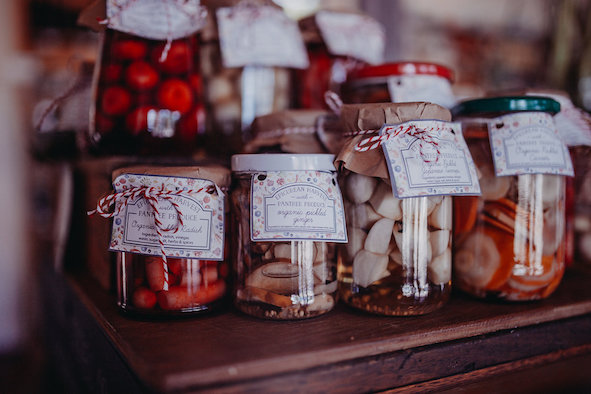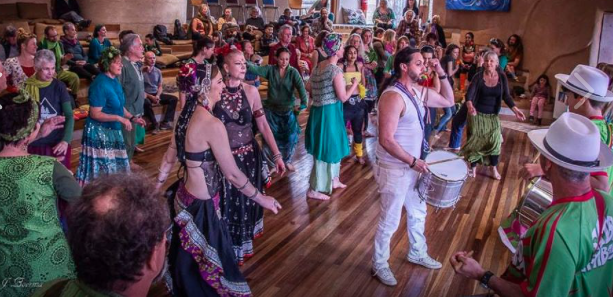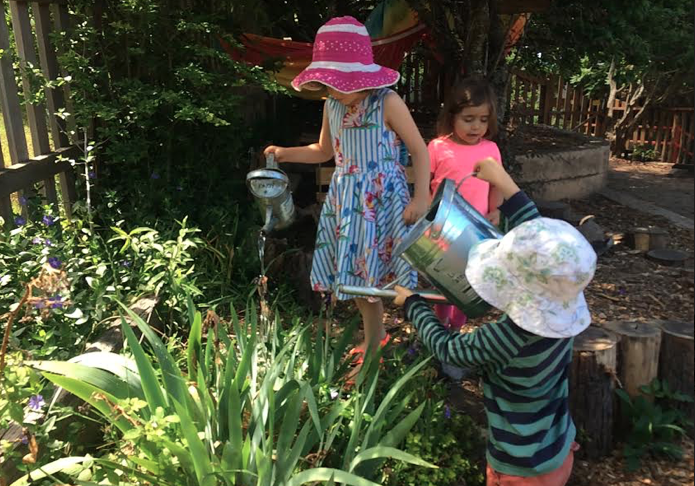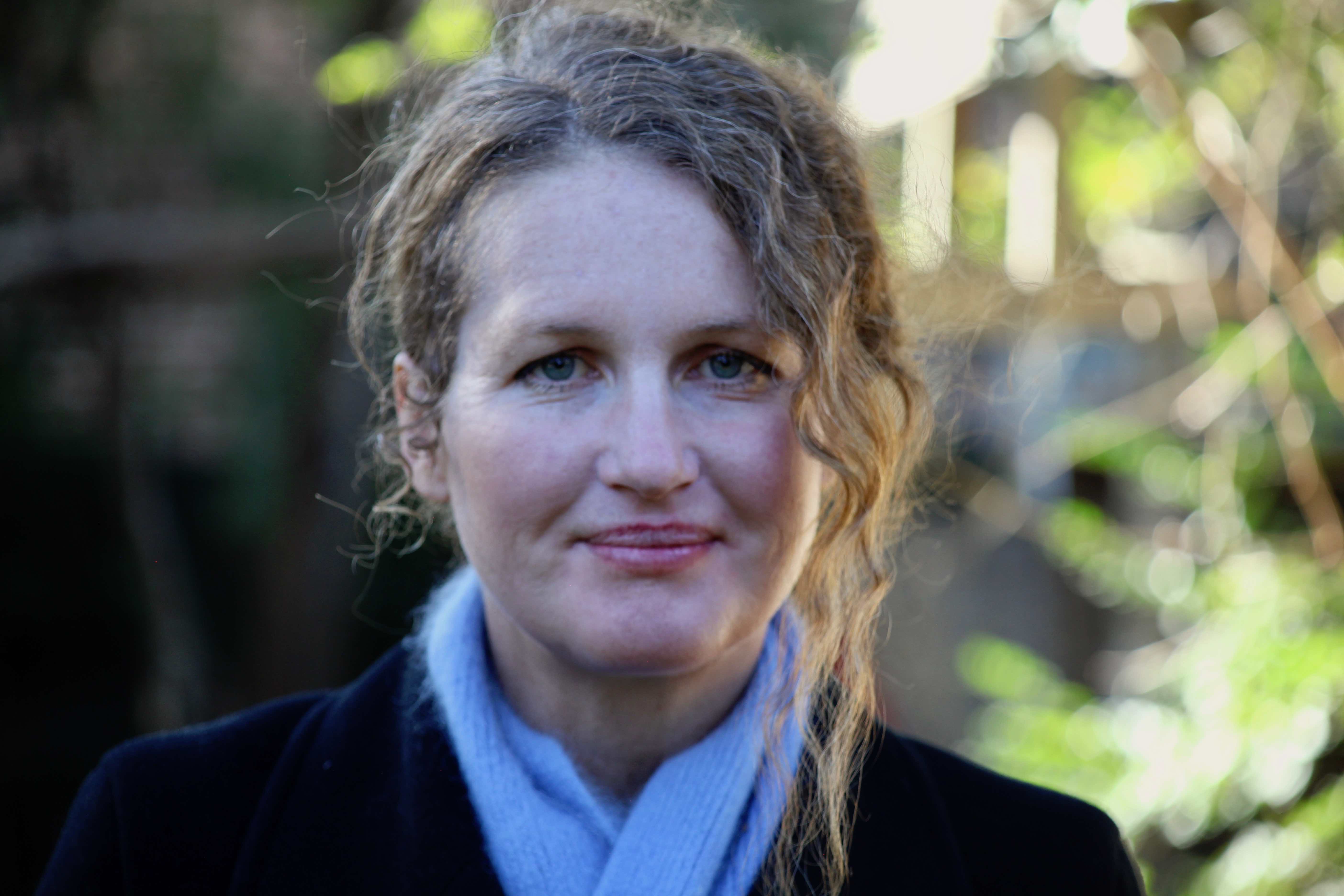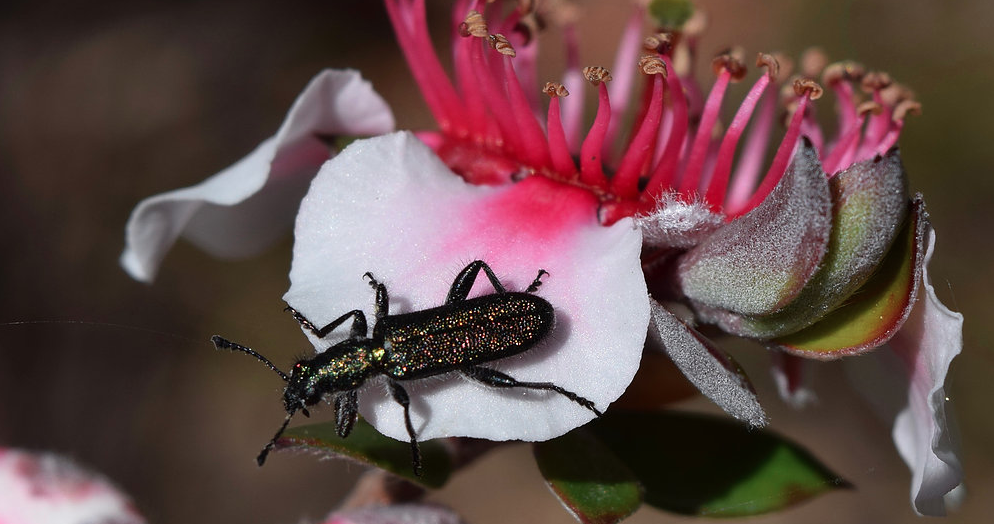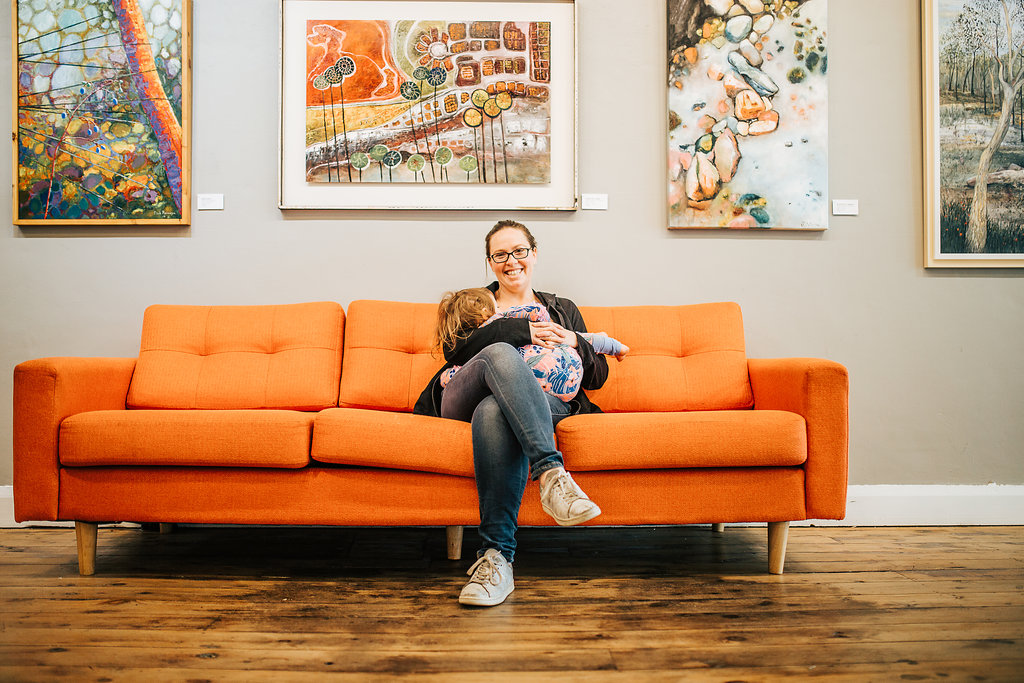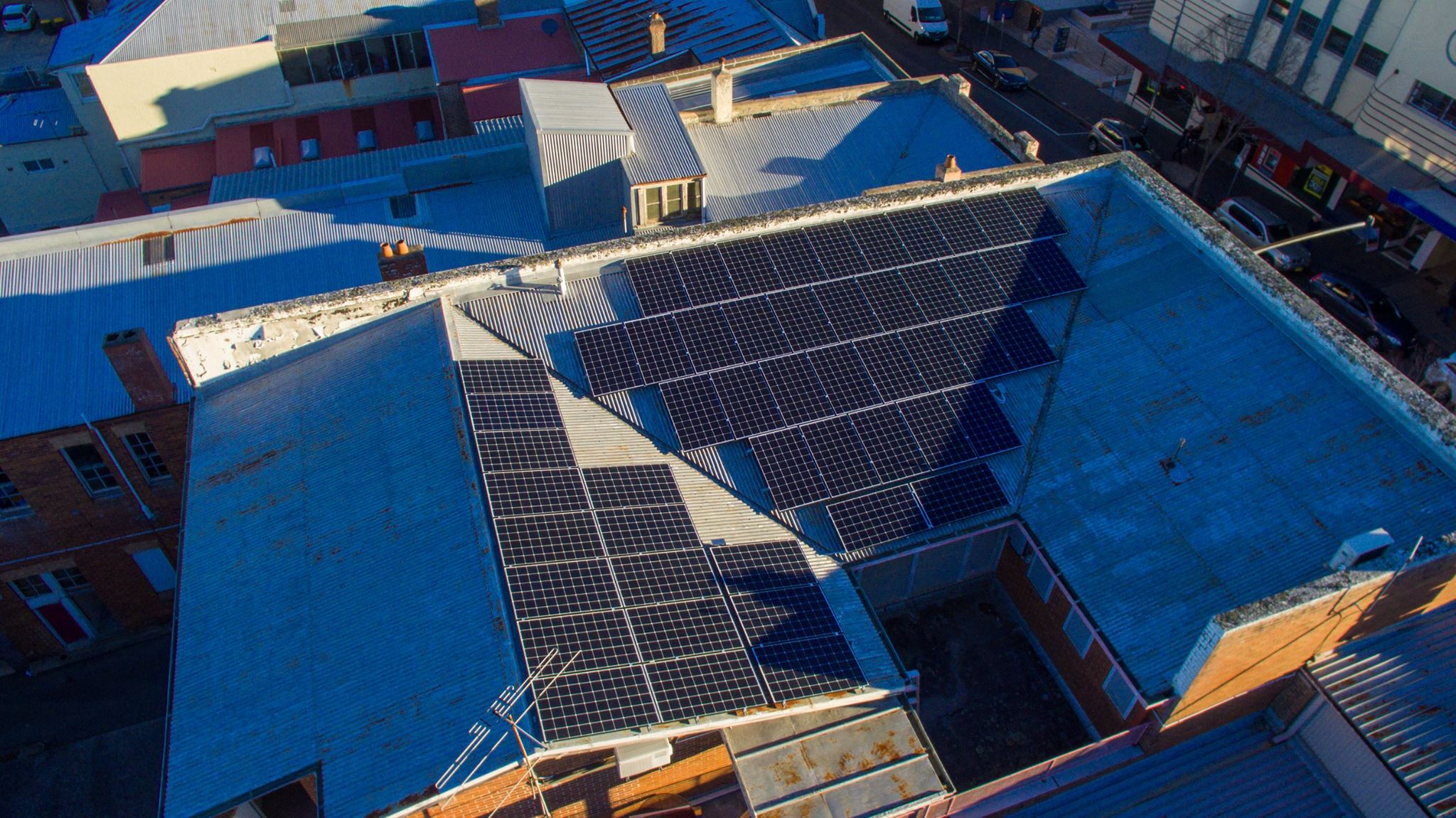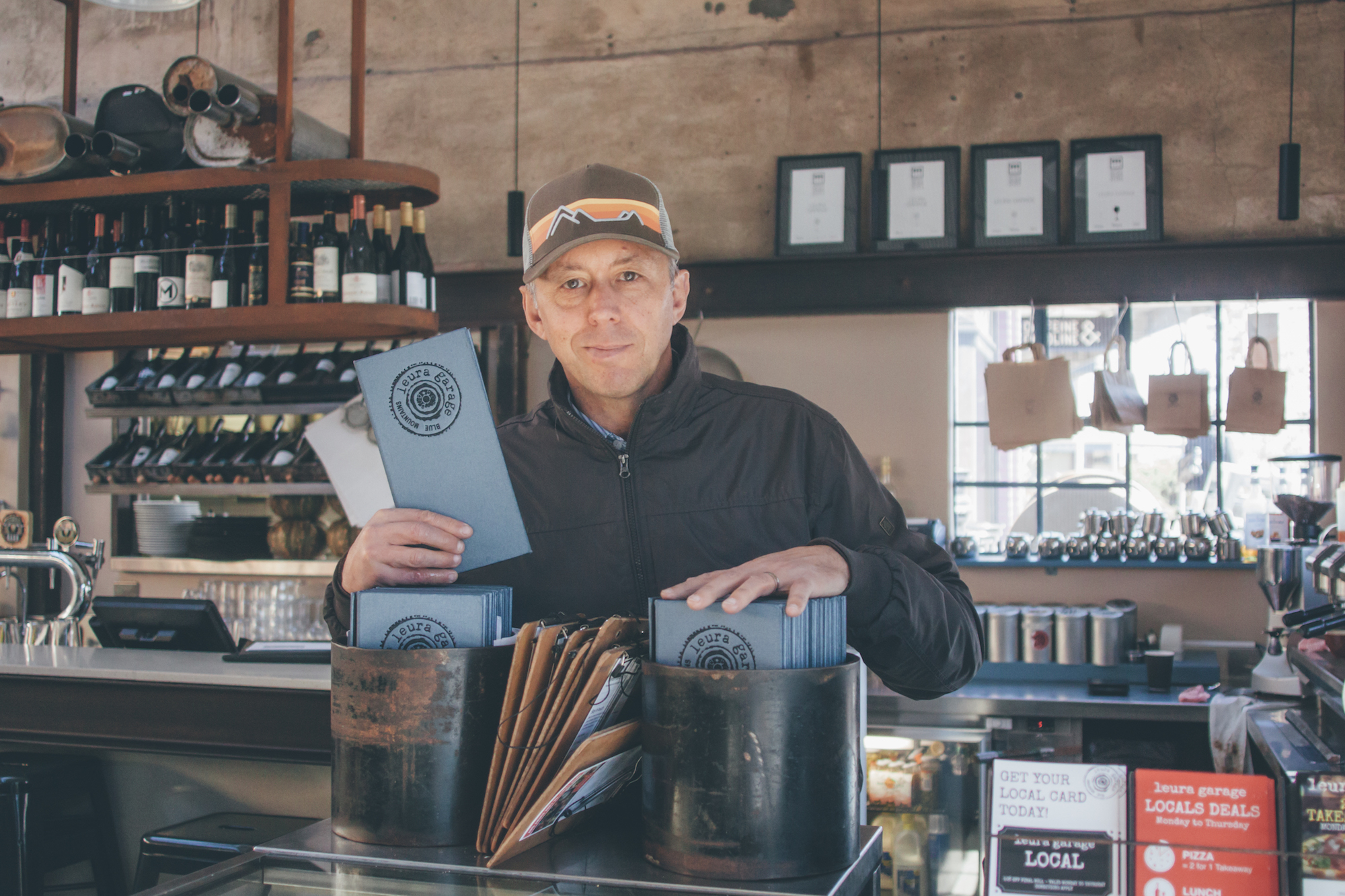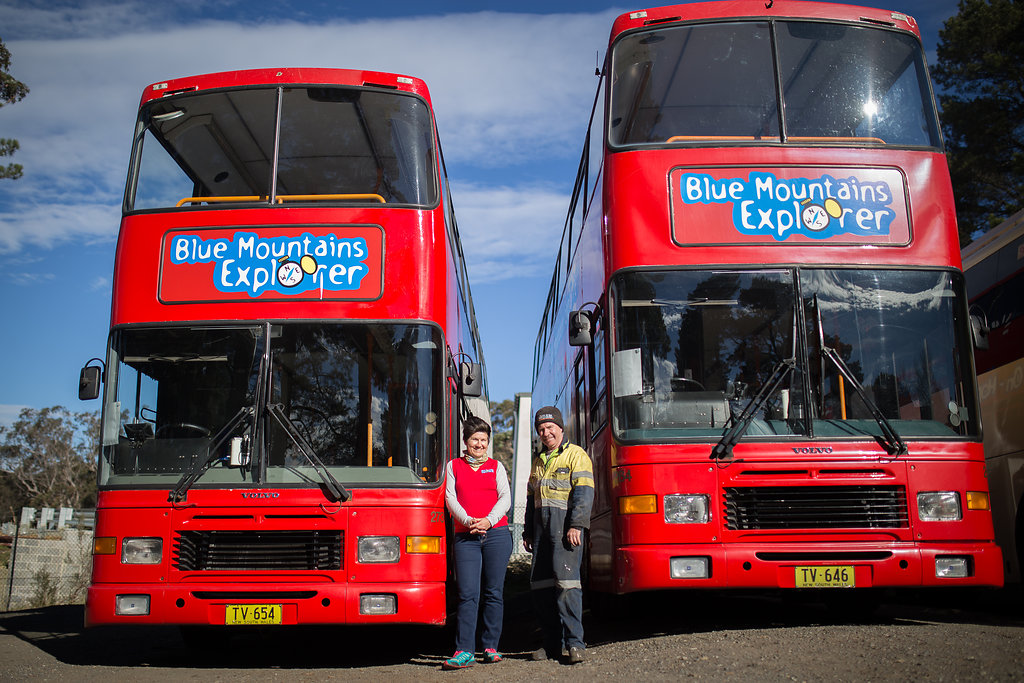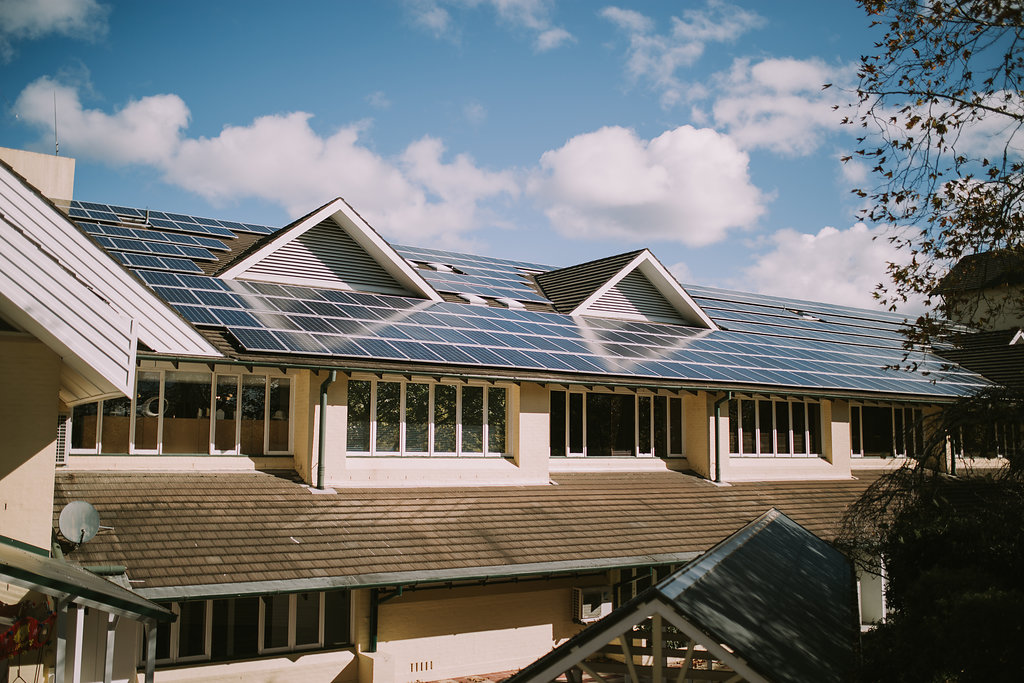Blog
It was all over the news in January. A specialist team of remote area firefighters from the NSW National Parks and Wildlife Service (NPWS) and the NSW Rural Fire Service (RFS) carried out a series of deft operations and successfully saved the prehistoric Wollemi Pines from the bushfires.
“Wollemi National Park is the only place in the world where these trees are found in the wild and, with less than 200 left, we knew we needed to do everything we could to save them,” Environment Minister, Matt Kean said.
What you may not know is that the team who carried out this complex rescue mission had been trialling locally-made fire action bags and belts, custom made for Australian conditions by the Summit Gear sewing factory in Katoomba.
The specialist firefighting team’s achievements while trialling the gear could be said to be a testament to the quality and usability of these products.
Summit Gear owner Robert Inshaw is proud of his years of experience supplying firefighting bags and harnesses for the Blue Mountains NPWS and RFS.
“Australian fire fighting conditions are often more remote than American conditions, and require helicopter drops and winching” explained Mr Inshaw.
This means that local firefighters were often asking him to modify the American products they received. This summer, Inshaw suggested that they trial his locally-made custom gear instead.
Jake Kearney, from the Victorian Department of Environment, Land, Water and Planning, who has ordered a Summit Gear Modular Harness to trial for specialist firefighters, commented on his custom kit.
“Thanks for making and delivering the modular harness so quickly. The workmanship is second to none and I look forward to many years on the fire ground with it.”
Inshaw hopes that this proof of product quality combined with the lower carbon footprint of local production will be enough to keep his custom fire products selling.
Speaking of lowering carbon footprints, Summit Gear has achieved a Gold rating with Low Carbon Living-Blue Mountains.
Inshaw had a 52 panel, 15kW solar system installed in July 2017 for his shop and factory.
“When you think about it, our energy usage is primarily during the day when the sun is out so it makes good environmental and economic sense”, says Inshaw of his investment.
The panels have reduced Summit Gear’s winter bill by 50%, and his summer bill by 75%,
He has also switched all regularly-used lighting with LED bulbs and switched to energy providers Powershop, a company that offsets emissions at no extra cost and only funds renewable energy projects.
Inshaw would like to see his business become carbon neutral, continue to reinvest locally and discourage a disposable economy in favour of a sustainable one. “I love the fact that Summit Gear supports local families with employment opportunities, we are committed to our loyal customer base in retail and with the Emergency Services hope to harness this local support to better compete with other companies who manufacture offshore”.
Built in 1902, Kurrara Historic Guest House is the original house of the Coomonderry Estate, nestled on a quiet corner between Katoomba and Leura and surrounded by stunning cold-climate gardens.
Current owners, Evalyn and Bob recently completed significant refurbishment that includes a woodlined yoga studio out the back
The studio is filled with natural light and warmed by insolation from the Eastern and Western wall length windows. Thoroughly insulated roof, walls and floor reduce the costs of heating and cooling by energy efficient reverse cycle air conditioning that are only needed on really cold or hot days. A beautiful ceiling bay window sky light has been built from floor-boards recylced from some of the original building.
Bob is meticulous about installing and maintaining high efficiency LED lighting throughout, and most of the water fixtures are efficient. A large water tank has been installed to keep the leafy surrounds lush and inviting.
All Food waste is used for two large worm farms, and Evalyn and Bob carefully clean and recycle all the single use food packaging used by guests. Paper, cardboard and soft plastics are also recycled.
Evelyn has created and styled the charming, comfortable rooms with hand made curtains, pelmets and soft furnishings to help to insulate the living spaces. The communal areas are filled with old worldly comfort and character. Located close to town, on the local bus routes, and close to cliff top walks, Kurrara Historic Guest House is an ideal place for guests coming by public transport or on foot.
I cycled through Northern Italy in my early 20s, and I can still feel the gentle warmth of that late summer summer light. Nothing I’ve read or watched has ever captured that feeling again. It’s one reason I’d like to take my family overseas - although the carbon footprint or flight, for humans, is currently prohibitive.
Visiting Varuna Writers’ House on a mid winter’s day, just before their first independent writers festival, took me straight back to the sunlit road-side vegetable shop in Genova, where I bought tomatoes for lunch. There were no plastic bags, no machine checkouts, and no ‘fast service’. Against my general rushy nature, which seems to be the Australian way of late, excuse the pun, I had to wait patiently in line, and enjoy the sights, sounds and smells of that small shop, while each customer was attentively served and the vegetables packed with care and humour.
Following extensive work to lower their carbon usage, Varuna Writers House now has that lovely feeling of dry, just right, sunlit warmth that you can enjoy sitting in winter sun. Varuna's writers certainly won’t be overheating or turning to ice in some tucked away back room. Knowing Varuna’s sedentary creatives are now enclosed in a pocket of warmth makes even me feel more relaxed.
Following their first Low Carbon Living carbon audit in 2017, Vera Costello, also a member of Blue Mountains Slow Food and Citta Slow movements, successfully applied for a $19,000.00 Green Energy Grant to implement the LCL recommendations. The grant process included workshops to develop a business plan around implementing an energy reduction strategy.
Varuna was closed in April 2018 to undertake the work. This included insulating the ceiling throughout with Jason York’s high quality Earthwool Insulation - glasswool without dyes or preservatives, and made from recycled materials where possible.
Raised as a builders apprentice in America’s North Atlantic Winter, Jason learned what thermal efficiency truly involves, and is amazed at the amount of energy wasted in Australian homes due to poor ceiling, wall or floor insulation, or proper sealing, partitioning, curtains, pelmets and/or double glazing...‘a well insulated home can reduce energy consumption by up to 40% or more...on average upwards of 50% or more of home energy consumption comes from heating & cooling’ - Jason York.
The job was bigger than expected. Very patchy fibreglass insulation was removed and the whole top floor ceiling insulated. The walls are sealed and did not need insulating. Some old fibro found in the process was tested and had no asbestos. Previously the office and garden studio had no insulation, and the increased comfort of those areas is the most pronounced. All the hot water pipes have also been insulated to minimise energy waste.
The ancient gas boiler that kept a large tank of water heated to supply the hydronic central heating system, has been replaced with a more efficient instant gas water heater to supply the hydronic heating system and hot water for general use. The temperatures of all rooms, where the hydronic heaters could previously only be turned on or off, can now be set at a target temperature from the central reception and living area at a comfortable 21-25 degrees. Each room has its own thermostat for personalised comfort, ensuring energy isn’t wasted in unused spaces.
The optimal heating recommendation the World Health Organisation is 18 degrees for healthy adults. However, a study published by Australia’s Building and Environment journal showed that: ‘boosting the office temperature a little higher than 22 degrees can save energy and (also) keep office workers comfortable without sacrificing their cognitive performance.’
In 2008 four big pine trees and dozens of ageing pines we sure taken out to let the sun shine in to Varuna’s gardens and Northern facing main building for passive solar heating. A community grant received 11 years ago was used to install a rainwater 10,0000 litre water tank with three quarters use for toilets and the garden. All Varuna’s lighting has been switched to LED as part of the Heritage grant, which is guaranteed to save 50% on energy bills.
Vera Costello has filled the small store room, where the gas boiler once was, with the electric heaters and fans previously used to keep guest writers from overheating or freezing. The log fire is put on for ambience when guests arrive, but along with all the electric heaters, is no longer necessary.
Varuna House has saved 9.1 tCO2-e and $3784 annually following these more recent changes (just enough for a short European Holiday!). Initial bills indicate a 22% reduction in Varuna's carbon footprint.
With her persistence starting to pay off, Vera seems to radiate a glow of satisfaction and warmth as she sits in the sunlight of the main living area’s North facing 1940s bay windows on the mid-winters day that I visit.
Vera is waiting patiently to see if Yorks insulation will also reduce the discomfort of Katoomba’s occasional sweltering summer days.
Low Carbon Living Australia’s Director, John Merson has just completed a national tour as part of the Cooperative Research Centre for Low Carbon Living (CRCLCL)s Expo circuit, highlighting the work LCL-Blue Mountains members have done to reduce their carbon usage and costs to address our climate crisis.
Titled ‘How can we achieve a zero-carbon future?’, the event showcased the results from over 140 research projects, undertaken during the CRCLCL’s seven year life span. These now provide a comprehensive evidence base to enable government and industry to meet their carbon reduction and energy efficiency targets.
CRCLCL CEO Professor Prasad said, “We are on track to meet our founding target of a cumulative reduction in carbon emissions of 10 mega tonnes by 2020 – a milestone we’ve achieved through the combined impact of all of our research projects.”
“It’s time to take our research to a broader audience - we want Australians to see how our research has progressed low carbon living across all aspects of urban life.”
At a time when so many independent food sellers have been taken over by large corporations, Sally Bromley continues to stand strong as the owner and manager of Leura Health Foods.
One of the original hipsters, Bromley established her health food shop long before Kombucha became available at your local festival or gluten free bread and soy milk could be requested at any suburban café.
With a vast array of both vegetarian and vegan food and household products available, Leura Health Foods provides everything you need to maintain a healthy vegetarian or vegan lifestyle.
Let’s get on with this!” When I first spoke with Winmalee High School’s Principal, Katrina Middlebrook, in November 2017, about the idea of joining the Low Carbon Living program, this was her enthusiastic response. The school had already undertaken several steps in the move towards sustainability and are keen to do more to reduce their carbon footprint.
Following that first, inspiring conversation, I joined Katrina and another interested staff member on a walking tour around the school. I was thrilled to find the school had already installed a 6.6 kW solar, photo-voltaic array system which generates over 9000 kWh each year and they were complementing their energy generation with the purchase of Green Power.
As the festive season begins in earnest, it’s all too simple to get caught in the trap of making mindless, panicky purchases and then spending the holiday feeling hungover with consumerist guilt. Luckily, the Blue Mountains abounds with retailers, artists and innovator who make gift giving a pleasure, whilst embracing a sustainable, low carbon lifestyle.
Gallery 188, Leura Fine Wood Gallery, The Food Co-op’s Big Little Shop, Leura Health Foods and Lyttleton Stores have all taken the LCL carbon audit and are aiming to further lower their carbon footprint in the new year. Each offers a range of local and Australian made, affordable gifts that support our local community and its place on this wonderful planet.
Beyond Christmas, the most significant ways to reduce your carbon footprint are easy: leave your car at home when you can, make meat a treat, avoid single use anything and switch to ‘green electricity’. Give LCL’s new carbon calculator a go, you can measure and track your carbon usage and receive suggestions how to further reduce your footprint over time. If you’re looking for more ways to make a difference, check out the UN’s Lazy Person’s Guide to Saving the World.
Adopting these suggestions are the types of incremental, behavioural shifts in how we live and consume, that individuals, entire communities must make if we have any hope of meeting the Paris Agreement’s target of holding global warming to below 2 degrees Celsius. Be vocal about the changes you make, within your own circle and vote accordingly in the next election.
Between a second year of rising carbon emissions, scientists calling for an urgent overhaul of global food production, our government in bed with the US coal lobby and failing to enforce vehicle efficiency standards, it’s easy to feel sceptical about Australia’s capacity to meet the Paris Climate Accord - especially when there’s no evidence to support the federal government’s claim that our nation is on track to meet its 2030 target “in a canter”.
Interestingly, the naturalist David Attenborough was chosen to represent the world’s people at the United Nations Climate Change Summit in Poland earlier this month. His message on our behalf was simple and reiterated the findings of the IPCC’s report, stating that “The world’s people have spoken. Time is running out. They want you, the decision-makers, to act now. Leaders of the world, you must lead. The continuation of civilisations and the natural world upon which we depend is in your hands.”
The Blue Mountains World Heritage Institute (BMWHI) established Low Carbon Living Blue Mountains in 2013 to lower the carbon footprint of the Blue Mountains Region. Since this time, the impact of climate change has become ever present, with our local fire services putting out more fires than ever in 2017, and their modelling predicting that our iconic upland swamps will dry out in 60 years.
To help fast track carbon reductions, Low Carbon Living joined forces with the University of Technology Sydney’s startup, Ecologic to develop a sophisticated online carbon calculator which enables households, organisations and businesses to measure their carbon use and gain recommendations about lowering their carbon footprint automatically. The LCL carbon calculator app will also encourage the adoption of the Low Carbon Living program nationally. Check it out here lclaustralia.org.
To support Low Carbon Living’s introduction of to a wider audience, we launched a crowd funding campaign in August and September, to encourage local community engagement with the program. Our Climate Change Fundraiser has contributed significantly to the ongoing running costs of the LCL program. To celebrate our success, an afternoon of dance, discourse and song was held at Kindlehill School in Wentworth Falls on September 22nd.
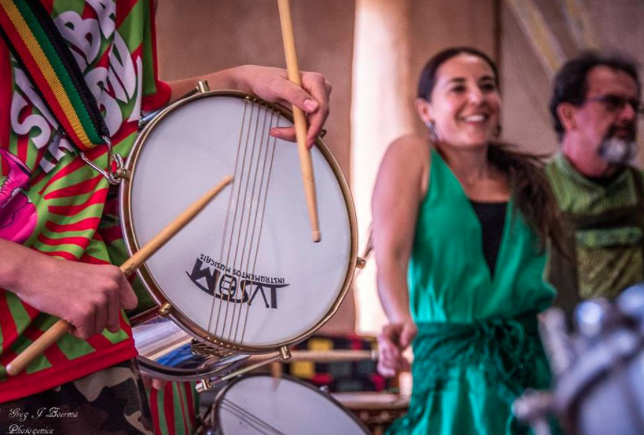
The ever infectious Hands, Heart and Feet set the tone, kindly inviting the Brazillian percussionist group Samba Trombada, AfriChele, the Ghawazi Caravan bellydancers, and the Paco Peasants Gypsy choir to share the stage. Safe to say, the quality of entertainment at a Low Carbon Living event is high!
Environmental activist, Noni Mc Devitt from Blue Mountains Renewable Energy Cooperative addressed the crowd, explaining that the major concerns over climate change raised in the 1980s, are still not being addressed by world leaders.
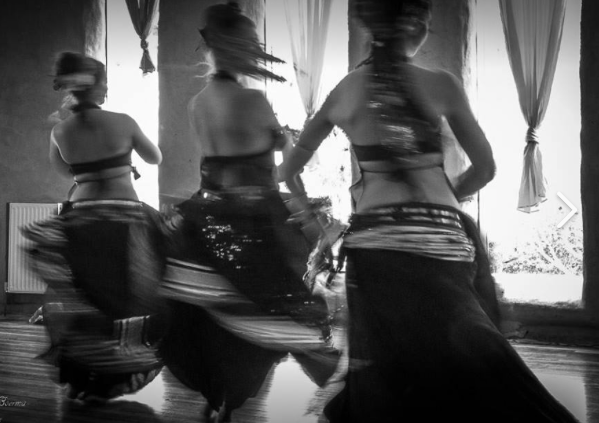
Kindle Hill principal, Lyn Daniels spoke about a recent school trip to Pele Island, Vanuatu, where the impacts of climate change determine daily realities faced by the children, teachers, community and school.
BMCC Cr Kerry Brown highlighted the importance of carefully planting trees in negotiation with our neighbours, allowing them to establish and stabilise ecosystems; provide fresh oxygen and shade; providing fresh oxygen and shelter for all living creatures, as well as transforming damaging atmospheric carbon into new growth.
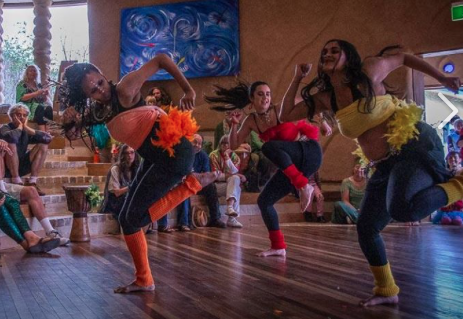
A tasty, vegetarian menu of soup, pizza, cake and Chai freshly made was on offer and served by a fantastic team of light-hearted, earth-minded, cup-juggling and finally, dish doing volunteers.
The American environmental writer Paul Hawkins described the emergence grass roots activism as the Earth’s Immune System in action. As the implications of climate change unfold, it’s up to environmental activists, residents, communities, artists, businesses and schools around the world to be the agents of the
Steiner philosophy was established at the tumultuous end of first world war by Rudolf Steiner, to create a fairer, safer world. Opened in 2000, Kindlehill School on Lake St Wentworth Falls, aims to take these philosophies for life and education into the new millennium. Made from straw bales and mudbrick the school’s buildings have the lowest possible carbon footprint and environmental impact. Trees that needed to be removed to make room for the school, and for the widening of the highway were used in the construction. Left over building products were donated by local tradespeople who were impressed with the project.
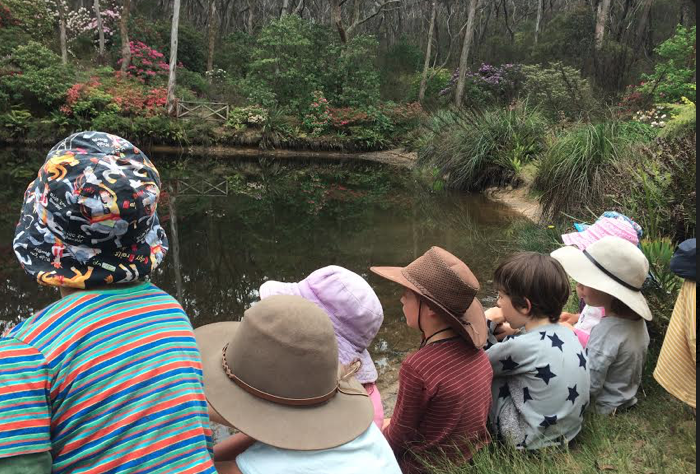
The school’s emblem is the local endangered Giant Drangonfly, and along with Silvermere Guesthouse (also Gold LCL members), the school sees itself as responsible for protecting the Wentworth lake catchment and ecosystems for future generations.
With climate change now accepted as the most pressing issue of our time, the school is re-focusing these efforts on lowering their carbon usage; integrating low carbon practices throughout the education and fabric of school life; and highlighting the vast ramifications of climate change for the more vulnerable communities around the world. Joining Low Carbon Living Blue Mountains has enabled the school to measure their carbon footprint, and improve their sustainability practices and principles.
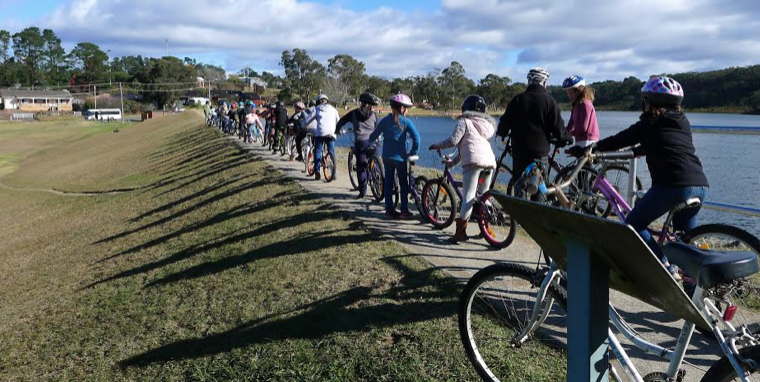
As well as standard recycling, students and staff have been educated on soft plastic recycling. Collection bins are located in each area of the school ready for recycling via super-markets. All food waste is composted on site, and used for food production. Reducing biodegradable waste to landfill reduces the carbon footprint of the school’s waste to landfill stream significantly. Water tanks are used for the garden.
Kindlehill’s 2016 ‘Low Carbon Living’ energy, waste and water carbon audit showed that one of the 5kW Power One Aurora inverters was not performing to warranty, and only producing energy 20% of the time. After exploring options for repairing the existing system, local solar installer, Gary from ‘Sunkissed Solar’ recommended they be replaced. This will go ahead on 26-28 September. Old panels will be tested and sold second hand via Gumtree.
Due to a significant winter energy spike, oil heaters have been replaced with gas heaters. Whilst gas is also a fossil fuel, gas heaters, efficient reverse cycle air conditioners, and heat pumps produce one-third of the carbon emissions compared to standard electric heaters. The kindy stoves have been replaced with gas, and the others are not in frequent use.
This winter the school has tested leaving the heaters on low, and only switching them off during the school holidays to avoid energy spikes and over-heating, and hopefully to reduce consumption. With 15-20% of heat lost through gaps around doors, the school plans to improve door seals to help buffer to the external temperatures.
The recently installed floodlight is LED, and the bulk of fluorescent tubes are LED. Remaining non-LED lighting in the main school building will be replaced during the next years planned renovation. Since joining Low Carbon Living Blue Mountains, Kindlehill school has switched to Powershop energy provider, who only invest in renewables and offset carbon usage. Powershop also assist with monitoring and provide feedback about usage.
As Powershop does not yet supply gas in NSW, Kindlehill’s gas supply is still from AGL. Interestingly AGL are ‘most improved’, but still listed 5th on Australia’s independent annual Green Electricity Guide. Even power companies do not agree with the Federal Government’ extension of the fossil fuel industry and their refusal to support industry transition to renewables.
Earlier this month LCL BM’s Annabel Murray has been recognised as one of four national climate change leaders by crowdfunding gurus StartSomeGood and Future Super. Annabel has been running the Low Carbon Living Blue Mountains program for the past two years, during which time her hard work and determination has seen the program grow from 30 local schools and businesses to now over 80.
Annabel writes below about what she has learnt from running the program and what has driven her to become a climate change leader;
Since running Low Carbon Living, I have learnt so many ways to reduce our rental household carbon use that our Powershop energy bill is now less than a third that it was previously. With up to 67% of energy produced in a coal fire power station lost during grid transfer; and then with every 1Kw of power used when you flick on a switch burning 6kg of coal, any direct heat transfer or thermal retention of heat around the home is going to reduce your carbon footprint significantly.
We cook on a gas cooker outside or on our fire inside during winter. We save hot water in a thermos to cut the use of the electrical kettle by one third. We use the indoor electric stove when we are too busy or tired, or when we have visitors. We have cut our red meat consumption down to less than once a week. We walk, ride and catch the train whenever possible. It all takes a bit more time and planning, but many of these changes have improved our health and lifestyle and it also brings some peace of mind to know that future generations and ecosystems may now have a chance. My Mother, a trained nurse, was on the Bathurst Hospital Board in the 1970s and managed to have smoking banned in hospital wards and to allow partners to attend births, for the first time in NSW. She also worked setting up the first play group, childcare centre and community bus in Bathurst. In the 1980s and 1990s she established the first Organics Retailer and Growers Association in Sydney, and achieved her later in life goals of making organics mainstream and fashionable.
In the 1980s my Grandfather, a packet-a-day smoking GP at West Walls, quit cigarettes and went cold turkey once the health alerts were widely accepted and then drove to Darwin to visit his estranged daughter in one leg. I hope that by the time my grandchildren are born, mining and burning or fossil fuels for any reason will be considered forms of archaic craziness for the uninformed.
To support Annabel and the LCL program further please check out the rewards on offer as part of our crowdfunding campaign here.
The Blue Mountains Botanic Garden at Mount Tomah has a unique claim to fame - it is the only Botanic Garden in the world found in a World Heritage area. The garden focuses on the conservation of cool climate plants and features an impressive 21,000 species of flora from across the southern hemisphere and the world. Standing a thousand metres above sea level, the garden covers over 250 hectares and attracts over 195, 000 visitors a year.
The Blue Mountains Botanic Gardens at Mount Tomah were recently awarded a gold rating from the Low Carbon Living program in recognition of their achievements in the area of sustainability.
In November 2010 solar panels were introduced on the roof of the Visitor’s Centre with a 9.57kW system chosen to best utilise the available roof space and infrastructure of the Centre. A 1.8kW extension was then added in August 2011 and an additional 15kW PV system was installed in December 2016. All up, solar panels now provide 40% of the Garden’s energy needs. Additional energy is purchased from GreenPower, which displaces electricity usage with certified renewable energy. LED lighting is also used throughout the Centre.
The Blue Mountains Botanic Garden aims to be the first carbon neutral Botanic Gardens in the world and to be off grid entirely by 2020.
Another successful sustainable and cost-effective measure adopted by the Garden, has been to capture its own rainwater for irrigation and drinking water use.
In addition, over the last 15 years the sewage treatment systems have returned liquids to the garden irrigation via a filtration system. This has been upgraded to increase capacity and further process sewerage so that more can be retained on site and used to fertilise the garden during the dry seasons.
In terms of waste management, smart solar-powered Big Belly compacting bins were introduced this year, which compact waste to one eighth of its size. This initiative has freed up storage space and reduced waste collection by 80%.
Transport efficiency measures include the provision of electric mobility scooters for public use and a solar-powered shuttle bus to assist visitors around the garden.
The road to Leura’s Brahma Kumaris Centre for Spiritual Learning is unruly and pot-holed but it rewards travellers with majestic views over the Grose Valley wilderness. The journey provides a fitting start to the meditation retreats the centre offers to people seeking a reprieve from the stress of modern life.
The Brahma Kumaris Centre for Spiritual Learning sits on a 132-acre sanctuary nestled in the bush. Guests are requested to adopt ‘pure living’ principles while they are on retreat. This includes a vegetarian diet, no alcohol, smoking or stimulants and modest clothing.
Brahma Kumaris is an international women’s-led organisation, established in Leura 17 years ago. Jessica Yuille is the environmental co-ordinator for Brahma Kumaris Australia and is very much aware of the environmental sensitivities of the centre’s location. As a member of the Low Carbon Living program, Brahma Kumaris Leura has achieved a silver rating and is informed and inspired by the efforts of other LCL members.
The centre recently added a new air-sourced heat pump hot water system designed by Jeffery Di and marketed by Stephen Wilson of Lead Tech.
Brahma Kumaris has eight solar hot water systems that service 45 twin-share rooms with ensuites; three 2-bedroom cottages; a dining and kitchen venue; meditation hall and reception area. In January 2018, two new heat pump water units replaced older systems and a further five new units will be installed later this year.
“We researched and chose heat pump technology because it is efficient, inexpensive to run, reliable and cheaper than solar,” says Jessica.
Heat pump technology has been around for at least 20 years and is a green energy alternative to traditional solar hot water systems. Lead Tech’s patented design differs from competitors in that each unit is quiet and compact, the size of a standard refrigerator, and does not require additional booster units (gas or electric) if the external temperature significantly decreases.
The Lead Tech unit has the lowest carbon footprint of any comparable heat pump on the market, the technology is Australian-owned and is adaptable for residential and commercial purposes.
The purity and quality of the water inside the system remains intact due to the design of the coiled piping inside the tank, preventing sediment and bacteria from accumulating at the bottom of the tank.
Ultimately, the water is drinkable and chemical free and water wastage is significantly reduced. Other benefits include tank water that is vented to atmosphere, not pressurized.
Although the upfront cost of a Lead Tech unit is 30 per cent more than conventional heat pumps, the immediate savings with energy bills are a minimum of 50 per cent. Upfront costs will be paid off in the first five years.
Other sustainable and energy-efficient modifications at Bramah Kumaris Leura include air conditioning heaters that have replaced gas heaters in the bedrooms.
Aircon Off smart controllers regulate the temperature and the investment is energy- and cost- efficient. Underfloor hydronic gas heating systems warm office spaces, and wall panel heaters are mounted in other areas.
Cardboard, batteries, light bulbs, plastic bags and clear packaging are recycled, and the compost bin was moved closer to the kitchen door so that it can be used more easily. Joan Houghton and other residents maintain the vegetable garden, growing food to supplement the requirements of large groups on the weekends. Leftover food is frozen and donated to Earth Recovery’s Food Rescue program in Katoomba.
Local Eco-architect Nigel Bell (Conservation Hut) designed an addition to the reception area incorporating straw thatched insulation in the roof and strategically placed windows, maximising natural light and solar heat. Nigel also renovated a wheel-chair accessible toilet in the 90-year old Stone Cottage, located at Govetts Creek at the foot of the property, surrounded by a well-established English garden tended to by the centre’s ‘Meditative Gardeners’. Landcare manages the creek, bushland and nature swamps on the property.
LED lighting is used internally along with path lights and road lamps. Power is switched off where not needed, particularly at night. Residents now manage with one freezer instead of two and the pilot light for the cooker is used only when cooking. The PA system in the venues is no longer on standby but switched off until needed. A 3-phase rinse tank heater in the kitchen is heated only when in use.
Vegetarianism is an adopted lifestyle at Brahma Kumaris, reflecting a philosophy of non-violence and awareness of the global waste, pollution and other costs associated with a meat-based diet. A recent study found that excluding red meat from our diet reduces our carbon footprint more than eliminating cars from our roads.
Gallery ONE88 Fine Arts in Katoomba began as a pipedream for Sharon and Victor Peralta. It became a reality ten years later, in November 2015.
The concept was simple: to support and encourage established and emerging artists by providing an accessible exhibition space, providing positive experiences for creators, investors and admirers, and offering low commission rates.
The gallery houses numerous exhibition spaces on three floors. The building’s main advantage is its expansive west-facing double frontage, allowing ample natural light to flood the space and highlight the works on display. Pedestrians can preview the space from the street. The gallery is welcoming and inviting and its vast windows allow flexibility in how works are showcased.
“Because we have such a huge expanse of space, it allows us to hang works differently,” Sharon says. “There are paintings on the ceiling, coffee tables on the wall, hanging nests and canvases displayed in every corner from the basement to the rooftop.”
Sharon and Victor invested in standard LED lighting and are now upgrading to the newest LED lighting systems, specifically designed for gallery exhibitions and further reducing the gallery’s carbon footprint.
Paper waste is recycled or reused as drawing paper for young visitors and general waste is minimised as much as possible. Residual glass has been used by an artist to recreate four glass sculptures currently exhibited in the gallery window. Organic waste is composted at home.
The gallery also provides ‘boomerang bags’ for customers, and offers MTNS Made bags for sale. Bubble wrap use is minimised with art buyers encouraged to return packaging for reuse to avoid adding to landfill.
Gallery functions are catered with non-disposable cups, glassware and cutlery, and the Peraltas source food from local suppliers to prepare onsite (managing a family of nine has enabled the Peraltas to streamline food production without waste).
Because the building is leased, the Peraltas need owner’s approval to install a solar panel system. For Sharon: “It is all about being flexible. Reassessing where you are is important to keeping on top of new technologies and improving the service you provide to the public.” Gallery 188 is a Silver rated Low Carbon Living Program member.
Sharon is aware there is a decisive shift in the way artists are addressing the impacts of climate change. She says artists are becoming more creative with recycled materials and merging traditional techniques with new ones.
Leura Fine Woodwork Gallery has carved itself a niche in the heart of Leura Mall amongst specialised retailers, cafés and restaurants.
Leura’s shopping centre boasts a picturesque setting with four distinct seasons. This encourages visitors and locals to take their time and enjoy the near-extinct pastime known as ‘browsing’.
Judith Langley and Neil Williams bought Fine Woodwork Gallery in 2001. It was an established business showcasing high quality handcrafted, made-to-last wooden pieces that directly challenge our throwaway society.
Over the past 72 years, local family-owned business Scenic World has evolved as a business focused on environmental preservation, partnerships and local investment.
Scenic World is Australia’s most visited privately owned tourist attraction, with over 1 million visitors a year. It runs the world’s steepest incline railway into the lush Jamison Valley, as well as the Skyway, Walkway and Cableway.
The business is accredited by Ecotourism Australia as a Green Travel Leader and regularly monitored by the Global Sustainable Tourism Council. Scenic World also has a silver rating as a member of the Blue Mountains World Heritage Institute (BMWHI) Low Carbon Living Blue Mountains program.
Scenic World is serious about improving its energy efficiency and reducing its environmental impact. Electricity generated by the railway during its descent is fed back into the grid, offsetting the electricity used in its ascent. Lanolin instead of petroleum is used to grease the railway tracks and minimise friction. The current Skyway upgrade will increase capacity without additional energy use, while the Cableway will be upgraded next year to minimise peak energy usage.
Anthea Hammon is Scenic World’s joint managing director. She is also an engineer and the third generation of her family to run the business. “Scenic World offers the visitor an opportunity to experience an all-senses tour of this unique environment without damaging, eroding or degrading the surroundings,” she says.
In 2000, Scenic World constructed a walkway above the valley floor, replacing the old walking tracks that caused erosion. The walkway enables visitors to minimise their footprint but still connect with the environment and learn about the flora and fauna.
Through a partnership with BMWHI, Scenic World has lent its support to projects including the Citizen Wildlife Monitoring Program, an archaeological survey of the Bleichert Ropeway a mining village at Ruined Castle, and a World Heritage education program for staff and visitors.
The business has also considered its waste management and food miles. Scenic World uses solar-powered waste compactors to reduce rubbish overflow and collection frequency by up to 80%. Its restaurant and café uses BioPak to save 22 tonnes of CO2 annually. Restaurant and café visitors are offered compostable cutlery and crockery. Fair trade coffee is provided by local outfit The Little Coffee Company and Katoomba’s Whisk & Pin products are also available. Other local produce is sourced from Katoomba, while free-range eggs are supplied by a farm in Windsor.
The use of a Pulpmaster to manage organic waste was inspired by other local businesses such as the Escarpment Group. A cardboard baler is used onsite to compact waste, reducing costs associated with storage and disposal, and Scenic World has contracted a waste management company to redistribute 100 tonnes of organic waste each year.
Summit Gear is one of the longest established family-owned retail and manufacturing businesses in Katoomba, opening in 1981, and the first retailer to invest in a self-sustaining solar panel system. Summit Gear manufactures its own brand of backpacks, bags and other high quality products for outdoor recreation, fire fighting, medical and technical rescue and supplies a wide range of reputable brands for hiking, climbing and trekking. Robert Inshaw bought the business in 2015 because “I wanted to take on an interesting business that excited me. It was an outdoor retailer, manufacturer and independent brand name, and I felt that was something I could work with”.
Robert purchased and renovated a more spacious premises in November 2016, upgraded to a new cloud based computer system and launched an interactive website. Summit Gear has also partnered with Running Wild to sponsor competitive Blue Mountains trail run events. With developing a sustainable business as an imperative, a 52 panel, 15kW solar system was installed in July this year to provide enough power for daily operational needs. “When you think about it, our energy usage is primarily in the day when the sun is out so it makes good environmental and economic sense”, says Robert of his investment. Power consumption last winter was $3500 a quarter, and Robert forecasts a significant decrease in his energy bill next year.
Other sustainable initiatives include LED lighting throughout the premises, the recycling of cardboard and plastics, the reduction of packaging and elimination of ‘junk’ products not up to standard. In the longer term, Robert would like to see his business become carbon neutral, continue to reinvest locally and discourage a disposable economy in favour of a sustainable one. “I love the fact that Summit Gear supports local families with employment opportunities, we are committed to our loyal customer base in retail and with the Emergency Services hope to harness this local support to better compete with other companies who manufacture offshore”.
Blue Mountains YHA Katoomba caters for 200 guests and is housed in the meticulously restored Art Deco National Trust building at the lower end of Katoomba Street. Bronwen Johnston has managed the local hostel for the last 5 years and is implementing YHA’s sustainability policies, committing to reducing its impact on the environment and promoting low-impact travel.
When Leura restaurant owner James Howarth established Leura Garage in 2011, he revitalised a mechanic’s workshop that had previously been inconspicuous to Leura Mall pedestrians. James introduced a unique ‘fun dining’ experience inspired by his international travels with his family. His vision to create “an immersive space, inviting for all” was quickly realised. The menu highlights the best seasonal organic produce and wines the region has to offer, the interior design reflects modernity whilst paying homage to the past, and the business provides opportunities for others, investing locally whenever possible. Sustainability is its foundation.
James chose local multi-award winning building contractors Blue Eco Homes to re-develop the property, maximising its northern aspect and re-inventing the building’s core structure. 22,000 litres of rainwater is stored under the garage, providing the restaurant with enough water to be self-sufficient. Harvested water is also diverted into 300 metres of piping under the cement floor, heated with an evacuated tube solar gas boosted system. It produces a gentle, warm heat that is evenly distributed throughout the space.
Heating can be a major cost deficit for businesses in the upper Blue Mountains in winter. Joe Mercieca’s Blue Eco Homes team incorporated measures into the design of Leura Garage that were not only cost-efficient in the longer term, but proficient in energy production, self-reliance and environmental sustainability. Taking advantage of the north-facing aspect of the building, large windows were incorporated, with bi-fold doors and a skylight allowing solar light and heat to permeate and radiate. A 10kw solar panel system, covering nearly 100sq metres of roof space, generates sufficient power fed back into the grid, lowering the electricity bill by $6,500 annually. Heating initiatives save James $7,000 in gas costs.
Other sustainable initiatives include energy efficient LED and fluorescent lighting, 3- and 4-star rating bathroom fixtures, a light monitor sensor in the bathrooms, low-emitting VOC (Volatile Organic Compounds) paint throughout and natural ventilation with assisted industrial fans. Leura Garage boasts two Master Builder Awards, a 2015 NSW Tourism Award and a gold rating from the BM Low Carbon Living program.
Another renowned local business taking sustainability seriously is Leura’s Bygone Beautys Treasured Teapot Museum & Tearooms. They have been reaping the benefits of Blue Eco Homes’ environmentally conscious renovations since 2013, resulting in a Low Carbon Living gold rating. Refurbishments to the 100 year-old building (circa 1917) took 19 months and were recognised by the NSW Master Builders Association, winning multiple awards. “After an extensive research, we could not have chosen better environmental builders,” says Maurice Cooper OAM, co-owner of this iconic business since 1992.
Hydronic underfloor heating using rainwater from storage tanks maintains a constant heat in winter. Insulation in the roof ensures the internal temperature remains above 13.5˚C. Double-glazed windows throughout the property retain the heat in winter and deflect direct sunlight in the summer. Fly screens allow windows to be opened and air flow to cool the interior.
The LCL carbon audit suggested novel sustainability options, and Maurice implemented what was possible, finding solutions to problems as they arose. Four watt LED globes in the chandeliers, display cabinets, utility rooms and kitchen areas guarantee 30,000 hours of lighting. A commercial curtain reduces fluctuation in the freezer’s temperature. Accumulated waste is separated into recyclable, landfill and organic bins, with organic waste composted and used in Bygone’s flowerbeds and offsite. Employees are aware of environmental practices and turn off lights in areas not being utilised. Limited table linen reduces laundry costs and tea towels are recycled. Bathrooms supply interleaf towels, reducing waste and toilets use grey water from the detention water tanks.
Katoomba’s Mountain Heritage Hotel & Spa Retreat, on the cusp of the Jamison Valley, is serious about its environmental impact and is making progressive change. The rewards are encouraging and have ensured successful business outcomes - cost reduction (higher profit), improved business efficiency and market awareness, invariable ethical business practices and client satisfaction. Due recognition has reverberated in the community with a double win at the 2016 Blue Mountains Business Awards and a silver rating from the Low Carbon Living Program. “Running an organisation actively reducing its carbon footprint has been an exceptionally positive experience”, says General Manager Eric Sward.
Eric began the journey of reducing the hotel’s carbon footprint by finding a mentor – an energy management consultant, Eco Profit Management, to help pave the way. Audits were conducted, waste, water and energy usage reviewed and the accumulated carbon footprint calculated. A sustainability policy was drawn up and a Sustainable Supply Chain Management plan (SSCM) was put into effect.
Implementation began immediately - the evaluation of solar power and a hydronic hot water system, the re-negotiation of contracts with energy supplier ERM for favourable competitive rates, investment in Aircon Off Smart Remote controlled energy-efficient air-conditioning and sourcing an ethical, organic linen supplier and local laundry service provider.
The decision to choose an eco-friendly linen supplier was an easy one. Lithgow’s Access Industries, a not-for-profit that supplies and launders the hotel’s linen and provides employment opportunities to people with disabilities, recommended EcoLinen Australia. Founded by textile importer and supplier Tim Ower Mohavi and his wife 15 years ago, EcoLinen is the first certified organic bed linen supplier in Australasia. It offers ethically made 100% cotton and bamboo bed linen certified by the Global Organics Textiles Standards (GOTS) and uses Oeko-Tex® approved European organic dyes. Considering cotton is sprayed with 25% of the world’s pesticides, EcoLinen is hypo-allergenic, carcinogenic- and toxic-free and helps regulate body temperature due to the extra wide, superior yarn for better breathability.
Having worked for almost 30 years in the textile industry Tim could see where improvements could be made. “A broader range of sustainable products, increased fair trade opportunities and a greater use of organic materials. People want to make ethical choices and we wanted to provide an alterative”. EcoLinen also supplies Mountain Heritage with cotton/polyester towels that last 30% longer than regular towels, and take 30% less time to launder.
Recently joined LCL-BM members Palais Royal Palais Royale also use Access Industries Lithgow laundering services, and are keen to introduce additional carbon saving initiatives over time.
Mountain Heritage’s other sustainable initiatives include LED lights throughout, soap recycling, reverse-cycle air-conditioners, timers and sensors for lighting systems, general recycling and food waste collected and composted by Leura’s Whispering Pines owners.
Katoomba’s family-owned business Blue Mountains Explorer Bus and Fantastic Aussie Tours is Australia’s first carbon neutral transport company, credited by the National Carbon Offset Standard Carbon Neural Program (NCOS). The 43 year-old business is reducing its carbon footprint by offsetting unavoidable carbon dioxide emissions from its mostly diesel-fuelled buses by investing in efforts to remove 100% of the carbon dioxide produced. Linda Brillante, the company’s strategist, explains that the decision was made to gain recognition from the NCOS program because of its extensive guidelines and procedures, its rigid and structured process, its comprehensive audit and exact emissions calculation from across the supply chain, encompassing every aspect of the business. “It is with great pride that we can state that we are the first transport company in Australia to be recognised as carbon neutral”.
And the accolades continue, with the Blue Mountains Low Carbon Living Program awarding BM Explorer Bus with a gold rating, acknowledging the high efficiency of the bus fleet and completing the rigorous NCOS process permitting carbon offsets for energy used by vehicles of transport companies. Program Director, Dr John Merson, revised the LCL rating system and approved a change of policy to allow for the assessment of transport companies who are making every effort to lower carbon emissions. A transport business category is now included that better reflects the emissions profile of transport-orientated businesses.
BM Explorer Bus currently has 4 red Volvo Olympian Alexander Royale double decker buses imported from Scotland, with a fifth recently purchased, 8 coaches, 20 drivers and 10 staff members. The investment in reliable Volvo engines and Scottish engineering has guaranteed high efficiency and low maintenance. Darryl Booth, chief mechanic and a partner of the business, ensures the fleet is maintained to the highest standard ahead of schedule, reducing the replacement of parts and the possibility of breakdowns. Every component is recycled, the oil is carbon neutral and metal is reused. Bus drivers are required to have regular, updated training on how to operate the vehicles efficiently, considering variations in seasonal weather and passenger load.
In 2007 Katoomba was the first Australian community declared a Cittaslow International town, for its commitment to improving residents quality of life. Goolwa (S.A) and Yea (Vic), have also joined 233 Cittaslow cities globally to slow life down, highlight and protect local unique natural environments, promote local history, culture and creativity, and share locally sourced food,. Local sourcing of food and processing of waste are essential aspects to reducing the carbon load associated with transporting and processing food and waste around the country and globally.
As an evolving part of the Slow Food philosophy, Cittaslow is embracing a slower more meaningful lifestyle that brings people together around common goals to create quality of life for the whole community.
Sue Bell (BMCC Principal Urban Designer), Anne Elliott (Slow Food convenor) and Janet Cahill (Katoomba Chamber of Commerce & Community) collated Katoomba’s membership application. Eco architect Nigel Bell is the Cittaslow convenor. “Katoomba has an established genuine community”, says Nigel, so meeting Cittaslow critera wasn’t difficult. “This community embraces the Cittaslow philosophy. One of the biggest challenges is bringing everyone together to achieve common goals,” says Anne Elliott.
Trading local energy was the topic of discussion at Katoomba’s March 2017 Big Ideas Futures Forum: a Blue Mountains Living Lab initiative co-hosted by the Blue Mountains Youth Summit. The idea is that if you have solar panels and storage batteries you can trade your solar energy on a virtual a platform that connects you with community members who want to buy it. If you are concerned about rising energy prices, the platform offers the opportunity to purchase locally farmed clean energy at a competitive rate.
Nexergy founded by Darius Salgo and Grant Young, is creating a fairer energy system, where individual investment in renewable energy is rewarded and more sustainable living can be made available to all. Similarly to 'Airbnb', Nexergy’s local energy trading platform is "a win-win: those with solar and batteries get better returns, and buyers reduce their energy costs”.
The concept is not new for other parts of the world, but Nexergy is introducing the benefits to communities around Australia and developing a following that will hopefully create more inspiring success stories. Grant Young points out that Australian rooftop solar energy now exceeds Snowy Hydro Scheme production. Bloomberg New Energy Finance forecasts that by 2040 a third of Australia’s energy supply will be produced "behind the metre": from privately-owned PV solar systems.


